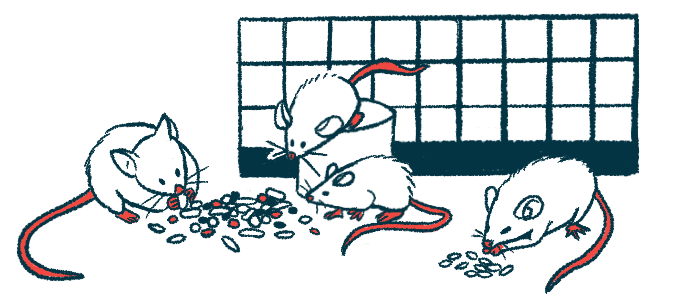Early Data for Gene Therapy FLT190 Support Ongoing MARVEL-1 Trial
FLT190 led to stable increases in enzyme activity, reduction of harmful substrate
Written by |

FLT190, an experimental gene therapy from Freeline Therapeutics, safely led to stable increases in the activity of alpha-galactosidase A (alpha-gal A) — the enzyme that is missing in Fabry disease — and prevented the buildup of globotriaosylceramide (Gb3) and lyso-Gb3 in a mouse model of the disease.
The treatment was also found to be well-tolerated and able to increase the activity of alpha-gal A in non-human primates.
Since completion of these preclinical studies, of which some data were previously reported, the dose-finding Phase 1/2 MARVEL-1 trial (NCT04040049) has been launched, which is testing the gene therapy’s safety in up to 15 adult men with classic Fabry disease.
The trial is currently seeking participants for its second dose group following positive safety and effectiveness data in patients who received a low dose of the therapy. Initial safety and efficacy data from this second group and updates from the low dose group are expected in the first half of this year.
“We are encouraged by these preclinical data that support our ongoing Phase 1/2 clinical trial of FLT190 and our belief in FLT190 as a potential life-changing, one-time therapy for people with Fabry disease,” Pamela Foulds, MD, chief medical officer at Freeline, said in a press release.
The preclinical study, “Preclinical evaluation of FLT190, a liver-directed AAV gene therapy for Fabry disease,” was published in the journal Gene Therapy.
Current Fabry treatments are limited in efficacy
Fabry disease is caused by mutations in the GLA gene, which encodes alpha-gal A. As a consequence of these mutations, the faulty enzyme can no longer do its job of breaking down Gb3 and lyso-Gb3, which consequently build up to toxic levels and cause progressive organ damage.
Current treatments include enzyme replacement therapy (ERT), which is designed to provide the missing enzyme, or chaperone therapy, which helps stabilize the dysfunctional alpha-gal A. However, these therapies have limited efficacy and come with the burden of being life-long treatments.
“People living with Fabry disease can experience debilitating symptoms and disease progression, even with current treatments,” Foulds said. “There is a pressing need for therapies with more lasting efficacy that are less burdensome on Fabry families.”
FLT190 is an experimental gene therapy designed to provide, via a one-time infusion into the bloodstream, a healthy version of the GLA gene to liver cells, so as to enable the body to produce its own working version of alpha-gal A. It’s packaged into a modified adeno-associated virus (AAV) viral carrier that helps the treatment be taken up by liver cells.
We are encouraged by these preclinical data that support our ongoing Phase 1/2 clinical trial of FLT190 and our belief in FLT190 as a potential life-changing, one-time therapy for people with Fabry disease.
In vitro, or in-the-lab, experiments described in the study showed the experimental gene therapy could be taken up by several cell types, including liver cells, where it triggered the production of alpha-gal A.
Dose-dependent and sustained increases in alpha-gal A activity were also observed in the bloodstream of healthy mice two weeks after a single infusion of the gene therapy.
In contrast, following treatment with either Replagal (agalsidase alfa) or Fabrazyme (agalsidase beta) — two approved ERTs for Fabry — alpha-gal A was rapidly cleared from the bloodstream, leading to an overall lower enzyme exposure compared with FLT190.
Similar increases in alpha-gal A were observed in the bloodstream of a mouse model of Fabry disease after a single FLT190 infusion, as previously reported. Enzyme activity levels peaked after four weeks and were sustained for the remainder of the study (up to 14 weeks). Notably, alpha-gal A levels were significantly higher in male mice than in female mice.
The enzyme was distributed across bodily tissues, including the liver, kidney, and heart. Significant elevations in the liver were “reflective of local production of the enzyme,” the researchers wrote, which is consistent with FT190’s liver-targeted mechanism of action.
Significant clearance of Gb3 and lyso-Gb3 was observed
Notably, sustained increases in alpha-gal A activity resulted in the significant clearance of Gb3, which was reduced by 91% in the blood, by 64% in the kidney, by 97% in the spleen, by 99% in the liver, and by 98% in the heart relative to untreated Fabry mice.
Lyso-Gb3 levels were also reduced by 98% in the blood, by 94% in the kidney, and by 98% in the heart. Reductions in Gb3 and lyso-Gb3 in each organ generally correlated with the degree of alpha-gal A activity.
FLT190 also led to significant increases in alpha-gal A activity in the bloodstream of non-human primates within one to two weeks after a single infusion of the gene therapy.
The gene therapy was effectively taken up by the liver, where it continued to produce alpha-gal A. Consequently, ongoing uptake of the enzyme was seen in other target organs.
No treatment-related toxicities or side effects were reported. Most non-human primates developed no or low levels of antibodies against the gene therapy.






